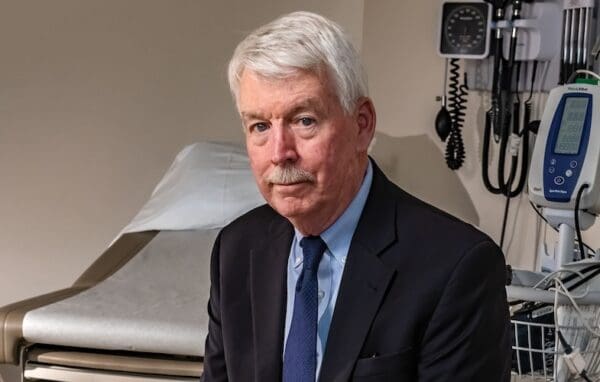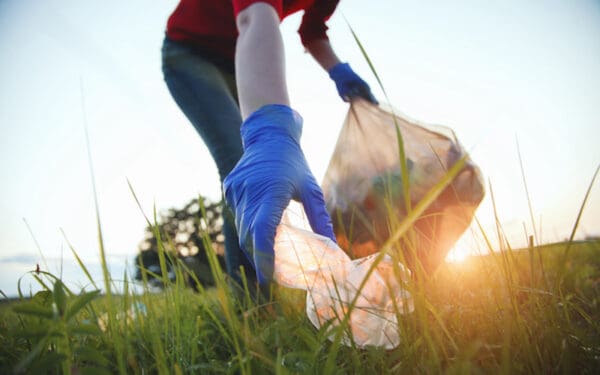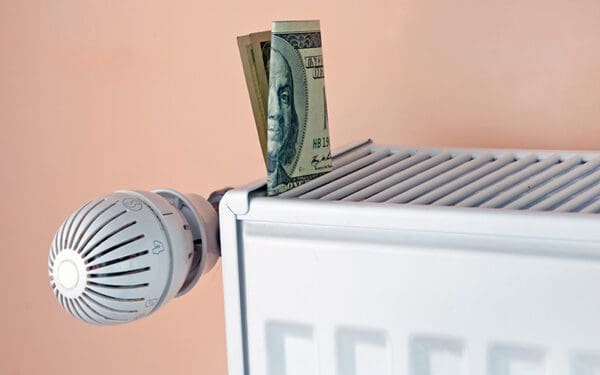
Robert King has spent more than three decades reviving derelict dams. Photo: Courtesy Robert King
When Robert King was just a kid, his family took a hike after a Thanksgiving meal. On that walk through the Massachusetts woods, they stumbled on an abandoned hydropower dam. From that moment, King’s life changed. He was completely captivated by hydropower. Today, as president of a suite of clean energy companies based in Keene, New Hampshire, King develops small-scale hydroelectric, solar, and energy storage projects. He’s spent more than three decades reviving derelict dams and lovingly restoring them back to life before reselling them. Currently, he owns three in New Hampshire and Massachusetts. Together, his dams produce about four megawatts of electricity, enough energy to power roughly 3,000 homes.
King’s motivation in nursing neglected dams back to health is the idea that individuals wield more power than they think they do. Yes, powerful multinationals and conglomerates have changed our climate by pushing fossil fuels on the public. And yet, he says, regular people who set their minds to it can make a difference.
This heartfelt conviction led King to undertake a documentary film project. “The Power of Water” (available to stream online), which first aired on PBS in March 2024, examines King’s life and work with the intent of inspiring viewers to take action toward conservation and environmentalism.
We recently spoke with King – who serves on CLF’s Board of Trustees – to hear more about the possibilities of hydropower. Our conversation has been edited for length and clarity.
CLF: You buy abandoned plants, fix them up, and sell them. You’ve done that since about the age of 25, and at one time, you and your partners owned 14 different hydro projects. What role can hydropower play in a clean energy future?
King: Well, it already plays a role to the tune of roughly 18% of the New England grid. And importantly, the larger hydropower plants and the pump storage plants provide energy storage, which, of course, become more and more important with the increasing capacity supplied by intermittent energy sources like wind and solar.
Internationally, 16 countries are approaching 100% renewables, and every one of them has a huge hydro component–Norway, Costa Rica, Congo, Bhutan, and Iceland, for example. I think Norway is 90% hydro, which is not to say it doesn’t have environmental impacts. It is to say that it is a reliable, very old technology that, for the most part, is clean, but not always. Some of these hydro plants, particularly in the tropics, release methane depending on how much algae is blooming and how much vegetation is rotting. So, like every energy source, it’s never a slam dunk. But worldwide, hydro is quite important to the base load of zero-carbon energy.
CLF: Okay, so internationally, hydropower is an important renewable energy source. What role could hydropower play in New England? Could we ever achieve 90% hydropower like Norway?
King: No, not even close. It’s just not possible without destroying every wild river in Quebec and then importing all that electricity. And I’m not advocating for that at all. More than anything else, I advocate for energy efficiency and conservation so that the small role hydropower plays today can become a much bigger role simply by reducing the size of the pie.
CLF: With higher electricity demand expected in coming years, thanks to more electric vehicles on the road and more heat pumps in houses, how can hydropower realistically contribute to a larger component of energy production?
King: Well, there’s so much conservation and efficiency to be had! Replacing the conductors in high-voltage transmission lines saves energy. Charging vehicles at night doesn’t add to the overall demand on grid capacity. So, there are many ways to do this smartly where hydro becomes a larger piece of the pie, even without adding a single kilowatt of new hydro capacity.
CLF: Who buys the hydro dams you’ve sold throughout your career?
King: People who just love the idea, love the technology, love rivers. There are some people like that, but more likely these days, it’s people in the industry, what we call aggregators, who go around buying lots of power plants and assembling large staffs to run them. These aggregators might have a billion dollars’ worth of hydro assets at some point.
CLF: You’ve mentioned the downside of hydropower, primarily its environmental impacts. This is something CLF has worked hard to balance with hydropower’s potential. Can you explain the disadvantages?
King: Most small-scale New England hydropower has some kind of a dam. And therein lies the most obvious environmental impact of small hydro: It acts as a blocker to migrating fish. Some sites will have water quality issues… behind a dam, the water can become stagnant… which can lead to dissolved oxygen and nutrient problems.
CLF: Despite some of hydropower’s downsides, you remain enthusiastic about this very old but very reliable clean technology. This comes through very strongly in the PBS documentary about your work. What’s the one key point you want people to glean from the movie and your life?
King: The movie’s point isn’t so much to say that hydro is the solution. It’s just a small part of the solution. I also want to show people that an individual or a few people can make a difference in the face of the climate and biodiversity crises. You don’t have to wait for governments and huge companies to make a difference (as much as they need to). You can make a difference. I just want to try to inspire people that individuals can do something, whatever it may be to respond to and act on these massive existential crises, and above all, to not lose hope.
This interview is one of an occasional series on New England’s energy innovators.



